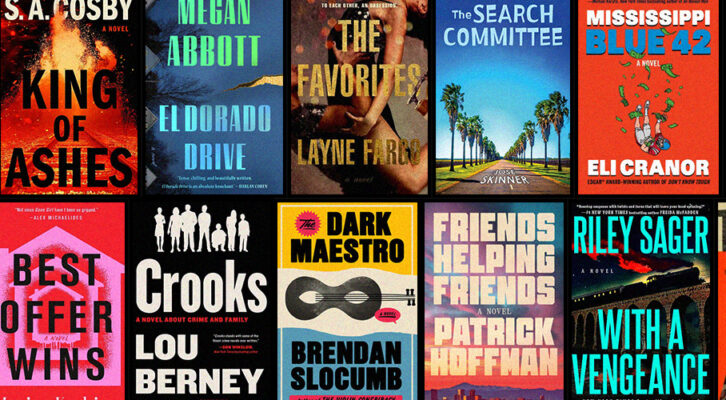
Embracing Imperfection: On Writing in a Second Language
Kaori Fujimoto Recounts the Challenges of Finding Her Voice
in a Different Tongue
More than twenty years ago, walking into a foreign bookstore in Tokyo, the first thing I noted was a slightly musty yet soothing scent. It came from the paper used for these books and magazines, which had been shipped from overseas—the paper either thicker or thinner, and certainly rougher, than its counterpart in Japanese publications. Breathing in the unfamiliar smell, I walked through the dimly lit aisles lined by stacks and shelves with a somewhat disorganized feel. I had ventured into this well-known bookstore to buy a copy of The Catcher in the Rye.
I found one and flipped the pages of the paperback, feeling the texture on my fingertips, my joy inexpressible. But I wouldn’t tell anyone about this visit to the store, let alone my excitement to “hear” Holden’s voice in his language instead of the Japanese translation I’d read. People around me, family or friends, would only see my interest in reading a foreign book in the original language as another sign of my weirdness. Whatever people had to say about this delight—intense yet quiet, and deeply felt—I was certain I found love.
*
I was born and grew up in the Tokyo area, speaking only Japanese. My upbringing was anything but international, and foreign language learning was beyond everyone’s horizons, but from an early age, I gravitated toward translated stories from other cultures. I loved reading about characters who lived in a small German town, a big French city, or on a deserted island; they spoke, acted, and gestured in ways that were totally strange to me.
I took shelter in the unfamiliar because I was unhappy with the familiar. I was the type of child who was called “weird,” unable to fit into school and other societal settings. I simply didn’t know how to communicate naturally with people—in any group setting, my awkwardness put others off, and I ended up feeling like a faulty product. So, I turned to the world of foreign tales as the only place where I felt safe and comfortable, partly because the people there appeared even stranger than me.
I took shelter in the unfamiliar because I was unhappy with the familiar. I was the type of child who was called “weird,” unable to fit into school and other societal settings.
My attempt to read works by American and British authors in the original language began in my university years. With the limited knowledge of English grammar I had learned at school, I read fiction and nonfiction books that I found in tiny sections for foreign books at Japanese bookstores. These people and places, depicted in their original languages, were far more multi-dimensional; they had stronger colors, sounds, and smells. I periodically returned to the same bookstore where I found The Catcher in the Rye for more books and, in time, began itching to write something in English myself. Eventually, after finishing university, I enrolled at a college outside Atlanta to study creative writing.
The path of learning to write in a foreign language as an adult was, unsurprisingly, full of unexpected and discouraging bumps. English and Japanese are totally different languages in terms of grammar and writing systems, but these technical differences were not a major obstacle. What I found trickiest was that a literal English translation of Japanese wording is almost always awkward or incomprehensible. For example, a word-for-word translation of the English phrase “I didn’t feel well” would be, in Japanese, “My body condition/feeling wasn’t good”; “She brings out the worst in him” would be “In her presence, his personality gets bad,” and so on. I don’t know how many times I had to rewrite each assignment in my first nonfiction writing course at the US college. The professor who taught the course required me to polish my essay until everything it said sounded natural and clear in English.
This learning process was challenging and inspiring, but my initial inability to write naturally in English made me feel irredeemably flawed, just as my inability to fit naturally into anywhere made me feel miserably defective. No matter how imperfect I was, though, the act of writing in English was an extension of the world to which I had escaped as a child. Each time I finished one piece, I wanted to do better in the next one. I wanted to someday give the world what I received from reading foreign stories: a little nook in everyday life. Writing not only offered me my own space, but pointed me toward how I hoped to connect with the world I’d sought to withdraw from via stories.
This longing helped keep my heart open to the world throughout a longer-than-a-decade period when I penned nothing after returning to Tokyo, buried in responsibilities, and the years of struggles and stumbles after I resumed writing in my late thirties. During these years, I sought help from the writers I met in various places and saw that their critiques of my essays revolved around the overall atmosphere and my authentic voice, one that shows who I am as an emotional, flawed being.
In and after this process, I felt less and less uncomfortable in my homeland, where I was still a misfit.
I began to focus more on being “me” in my writing. While working on drafts, I looked squarely at simple facts about myself relevant to the work at hand, including being a native East Asian, a person who had an unhappy childhood in a dysfunctional upper middle-class family, a daughter of parents who experienced war, and a woman with no interest in raising a family. I acknowledged the experiences, one by one, heartwarming or heartbreaking, that these qualities had brought me and embraced them. I fully embraced them so that I would recount them in my truthful voice. I have never been perfect, nor can I ever write anything perfect. But I can always be authentic. I realized that being real, rather than flawless, is the best thing I can do for myself not just as a writer, but as a person.
In and after this process, I felt less and less uncomfortable in my homeland, where I was still a misfit. My work began to find homes in American publications. When a well-known literary journal accepted my essay, the founding editor sent me her copyedits saying that she preserved my “delicate tone” and my “own writing style,” and that she made several changes for “grammar or clarity.” Tears of joy almost welled up.
Writing in a second language has connected me to the world I was once afraid of and taught me to fully embrace my imperfection. While on this writing path, I keep trying to offer the “little nook” I have always wished to create for readers. And the path, as I see it, stretches to the horizon.
Kaori Fujimoto
Kaori Fujimoto is an essayist from the Tokyo area, where she currently resides. Her writing has appeared in The Threepenny Review, Mslexia, South Loop Review, and other literary journals and anthologies.



















